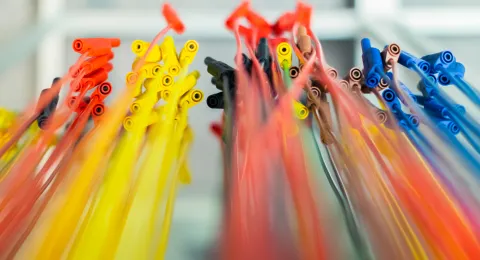Electronic waste is one of the fastest growing waste streams globally. A single device contains a wide range of materials, making recycling a complex process.
In his doctoral thesis, John Bacher explored improved recycling methods for metals found in smartphones and other electronic products. Current recycling processes result in significant losses of valuable metals such as gold and copper which could otherwise be reused.
“The electronics industry is a major consumer of metals, so improving recycling could enhance material availability. While base metals are largely recovered, the recovery rates for metals present in small quantities, such as precious and rare earth metals, remain low," Bacher explains.
Your phone’s design might be blocking efficient recycling
Smartphones tightly integrate various materials such as plastic, metal, and glass. These materials require different recycling treatments, but separating them is challenging.
“Electronic products are complex devices that were not originally designed with recycling in mind. As a result, some metals are lost in the process. For example, the design of a smartphone directly affects how well it can be recycled," Bacher notes.
Shredding, gasification, and smarter product design as a solution
In his research, Bacher identifies the causes of metal loss and proposes both immediate and long-term solutions. He believes the key may lie in optimised shredding technology.
“At present, it’s crucial to find shredding technologies suitable for waste that reduce metal loss in dust and fine particles as well as minimise contamination across material fractions.”
For the longer term, Bacher recommends metal gasification and smarter product design.
“In the medium term, gasification technology could be used to treat dust and reject fractions, as it removes organic materials and concentrates metals in the bottom ash. In the long term, it would be desirable to design products to be more recyclable, thereby reducing material loss. In my study, I highlight the benefits of modular design, which means products that are made from separate, independent components,” Bacher says.
The Curious People newsletter shares our solutions for helping build resilient communities, industry, and businesses while promoting the energy transition and the regenerative use of natural resources.
Essential insights for policymakers, recyclers, and electronics manufacturers
Bacher’s research offers valuable insights for a range of stakeholders, including recyclers, policymakers, and electronic manufacturers.
“Policymakers can deepen their understanding of how material recovery from electronic waste works and how factors like input composition or the choice of processing technology affect recycling efficiency.”
Electronic manufacturers, in turn, gain a clearer view of how product design influences recyclability. Current recyclers also benefit from the study, as it provides more detailed information on how recycling technologies impact metal recovery and help reduce losses.
More information
John Bacher, Senior Scientist, VTT
John.Bacher@vtt.fi
Bacher will defend his doctoral dissertation in the field of Environmental Engineering in Lappeenranta and online on 31 October at noon.





